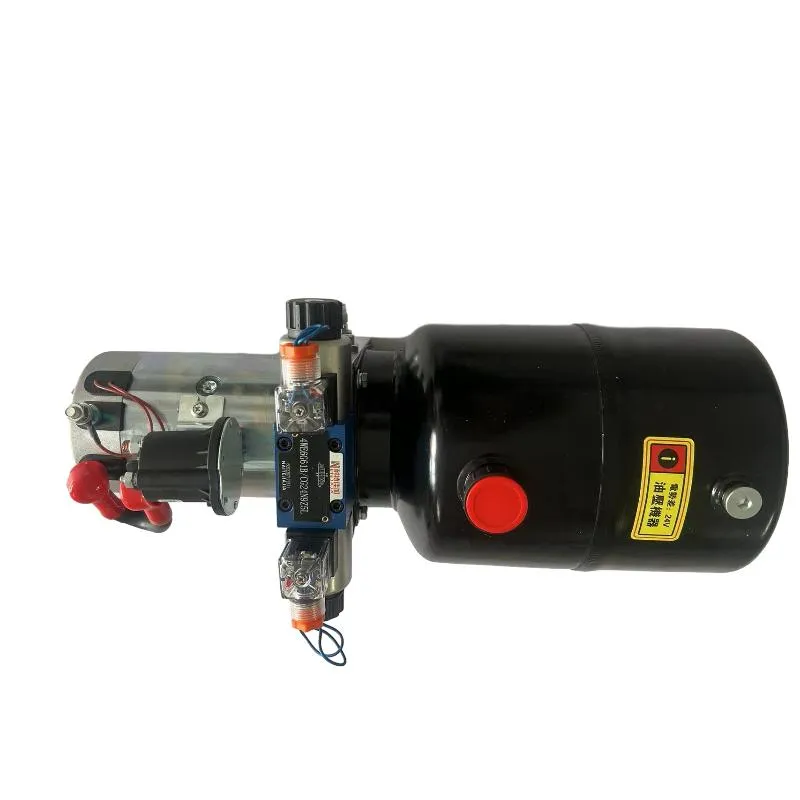Oct . 12, 2024 23:42 Back to list
two-way hydraulic cylinder factory
Two-Way Hydraulic Cylinder Factory An Overview
Hydraulic systems play a crucial role in modern machinery and equipment, providing the power and efficiency required to perform heavy lifting and powerful operations. At the heart of these systems is the hydraulic cylinder, with the two-way hydraulic cylinder being one of the most versatile and widely used types. This article explores the significance of two-way hydraulic cylinder factories, their operations, and their impact on various industries.
Understanding Two-Way Hydraulic Cylinders
A two-way hydraulic cylinder, also known as a double-acting cylinder, is a type of actuator that converts hydraulic energy into mechanical energy. It operates in both extending and retracting directions, making it suitable for various applications where controlled movement is essential. Unlike single-acting cylinders, which operate in one direction and rely on spring action or external forces for retraction, two-way cylinders can perform work in both directions with equal efficiency, making them ideal for tasks that require balanced power.
The Role of a Hydraulic Cylinder Factory
A two-way hydraulic cylinder factory is a specialized manufacturing facility focused on producing hydraulic cylinders, particularly double-acting cylinders. The production process involves several stages, including design, material selection, machining, assembly, and quality control. Each stage is crucial to ensuring that the final product meets industry standards and customer specifications.
Design and Engineering
The design phase is critical in developing a hydraulic cylinder that meets specific application requirements. Engineers utilize advanced software systems to create precise designs that account for factors like pressure ratings, cylinder stroke length, and mounting options. The design must also consider the material selection to ensure durability and resistance to wear and corrosion.
Material Selection
High-quality materials are vital for the production of reliable hydraulic cylinders. Typically, manufacturers opt for high-strength steel or aluminum alloys, which provide a good balance of weight, strength, and resistance to fatigue. The choice of seals and other components is equally important, as these parts must withstand high pressures and varying temperatures during operation.
Machining and Fabrication
Once the design is finalized and materials are selected, the manufacturing process begins. Machining involves cutting, shaping, and finishing the cylindrical components to achieve the required specifications. Precision machining is essential to creating the cylinder bore, piston, and end caps, ensuring smooth operation and minimal leakage.
two-way hydraulic cylinder factory

Assembly and Testing
After machining, the components are assembled, which includes fitting seals and ensuring all parts are correctly positioned. This stage is often followed by rigorous testing to evaluate the cylinder's performance under pressure and its responsiveness in both directions. Quality control is crucial to identify any potential defects early in the process, ensuring that only high-quality products reach the market.
Applications of Two-Way Hydraulic Cylinders
The versatility of two-way hydraulic cylinders makes them suitable for various applications across multiple industries. They are commonly used in
1. Construction Equipment Hydraulic cylinders power excavators, bulldozers, and cranes, enabling these machines to lift heavy materials and perform complex movements.
2. Industrial Machinery Many manufacturing processes rely on hydraulic cylinders for automated handling, pressing, and molding tasks.
3. Automotive Industry In the automotive sector, hydraulic cylinders are used for clamping, lifting, and forming operations, enhancing production efficiency.
4. Agriculture Agricultural equipment, such as tractors and harvesters, often employs two-way hydraulic cylinders for tasks like lifting implements and steering.
5. Marine Applications In the maritime industry, hydraulic cylinders are used for steering mechanisms, hatch covers, and stabilizers, contributing to smoother operation and safety.
Conclusion
The significance of two-way hydraulic cylinder factories cannot be overstated. These facilities are essential in ensuring that industries have access to reliable, efficient, and durable hydraulic cylinders that meet the ever-growing demands of modern machinery. With advances in technology and materials, the future of hydraulic cylinder manufacturing looks promising, paving the way for even more innovative applications across various sectors. As the world continues to evolve, so will the role of two-way hydraulic cylinders in driving productivity and efficiency.
-
Fork Lift Power Units - Hebei Shenghan | Efficiency, Reliability
NewsJul.13,2025
-
1.5-Ton Turbocharged Cylinder-Hebei Shenghan|Hydraulic Solution,Energy Efficiency
NewsJul.13,2025
-
Auto Hoist Power Units-Hebei Shenghan|Efficiency&Industrial Lifting
NewsJul.13,2025
-
Double Acting Power Units-Hebei Shenghan|Hydraulic Solutions,Industrial Efficiency
NewsJul.13,2025
-
1.5 Ton Lifting Cylinder 70/82-40-290-535 - High-Performance Hydraulic Solution | Hebei Shenghan
NewsJul.13,2025
-
Fork Lift Power Units - Hebei Shenghan | Efficiency&Reliability
NewsJul.13,2025
